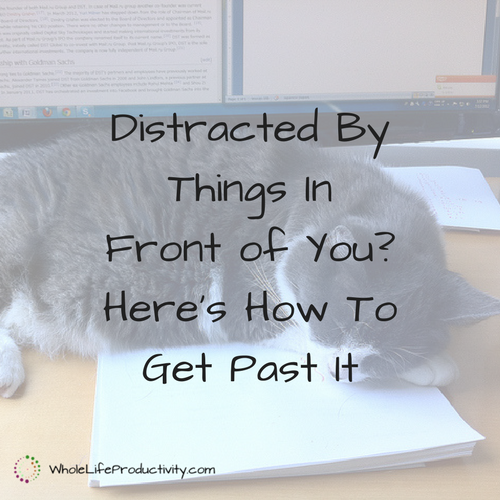
How To Plan Your Day
Some people put a lot of time into doing a weekly review and plan, and then neglect to plan their days. The result? Missed tasks, and a whole lot to do on that last day of the week.
I used to be one of these people. I would put a lot of time into deciding what I would do during the week, and then ignore the list until the weekend. , I always wondered why I had so much to do on weekends!
I’ve embarked on a quest to plan out my week in such a way that I am not overloaded on any given day, but also have a good framework for getting things done during the day. Today we’ll look at the general constructs of how to plan a day.
But first, let’s look at how not to plan your day.
How NOT To Plan Your Day
I can say that I have tried all these methods and have found them to be consistently ineffective in getting things done.
Ignore your weekly plan.
The first step in not planning your day is to ignore all the work you’ve done in planning your quarter, month and week. This will ensure that what you work on isn’t moving you any further to your goals.
Work from an open list
The next step is to have a ginormous list of things you want to get done, and then stare at it, paralyzed by its size, until you give up and go do something not on the list.
Schedule every last minute
Or you could swing to the other end of the spectrum and plan every last minute of the day, filling each empty spot with something from your task list. Then when you’re delayed in traffic, have a sick child, or are otherwise derailed, you can throw your hands up and abandon the plan altogether.
Or not.
Before You Plan Your Day
Here is something that I do that makes my daily planning go smoother. It’s a concept from IT, where we try to distribute the load of heavy processing across different machines so that not machine is at full capacity while the others are sitting idle. It’s called loan balancing.
To load balance a week, you need to take your weekly plan, with all the tasks that you want and need to accomplish during the week, and set them up across your week so that no day is overly filled with tasks. This means you have to look at the other demands on your time as well.
For instance, since I have rehearsals every Wednesday, I plan very little for that day. The tasks that get done can be done on my lunch break or in the short time between when I get home from work and we eat dinner.
Once I know what tasks to target for each day, I have a better idea of how to set them out.
How To Plan Your Day
Planning your day is taking that targeted task list compiled above, and thinking about when you will do them.
I do not add tasks to my calendar. Instead, I group them by physical location or type of task and pick a range of time when I will work on them. It doesn’t mean that I will get them all done; nor does it mean that I am overextending myself to get them all done.
- Write down your time parameters. This is important, because it gives you the time boundaries for when you can work on your tasks. Time parameters include things like working, carpooling, making dinner, etc.
- Write down three things you have to do to call the day a success. Next, pick three things that you will commit to doing, and figure out when you will do them. They might be able to be done during your time parameter blocks above – for instance, you might pay bills on your lunch hour. The nuumber three is completely arbitrary, but I find that if I do fewer, I don’t feel good about the level of accomplishment, and more makes me panic. Your mileage may vary.
- Make a secondary list of tasks Now I take the rest of the tasks that I am targeting for the day and give them a grouping. Then I slot them into the remaining free time as a group.
YOu can see more about how I do the grouping at A Quick And Simple Method To Plan Your Day
Summary
Planning your day starts with a load-balanced week, and then figuring out where to slot groups of tasks.
Like this article? Share it with a friend, or share it on social media.




